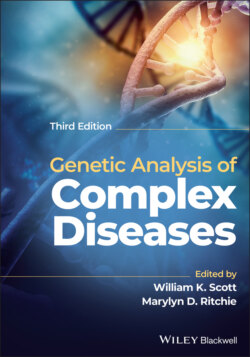Читать книгу Genetic Analysis of Complex Disease - Группа авторов - Страница 54
Nucleotide Repeat Disorders
ОглавлениеCertain loci in the genome have variable numbers of nucleotide repeats, typically of di‐ or tri‐nucleotide length. Most are not associated with expressed genes but can be exploited as genetic markers since they are highly polymorphic. A few loci with tri‐nucleotide repeats are located near or within a gene and, by expansion beyond a certain threshold, can disrupt gene expression and cause disease.
More than 20 disorders have been shown to be the result of unstable nucleotide repeats (La Spada & Taylor 2010; Polak et al. 2013). The most common of these conditions are summarized in Table 2.4. Expansions may occur in the exon, intron, or regulatory elements of a gene. The phenotypes of some of these conditions, including myotonic dystrophy, Huntington disease, and Machado–Joseph disease, among others, are associated with anticipation, a clinical phenomenon in which disease severity worsens in each successive generation. Because disease expression can be quite variable and difficult to measure, age of onset is frequently utilized as an analogue of severity and anticipation is then observed as a decreasing mean age of onset with each passing generation. The anticipation seen in these disorders is attributed to the intergenerational instability and resulting expansion of the repeated elements. However, some repeat disorders are stable during mitosis and meiosis and therefore do not exhibit anticipation. Furthermore, certain conditions are more likely to exhibit an expansion only when transmitted from a particular sex. For instance, the CAG repeat in Huntington disease typically only expands in male gametes, while the CTG repeats in Fragile X usually only expands in female gametes.
